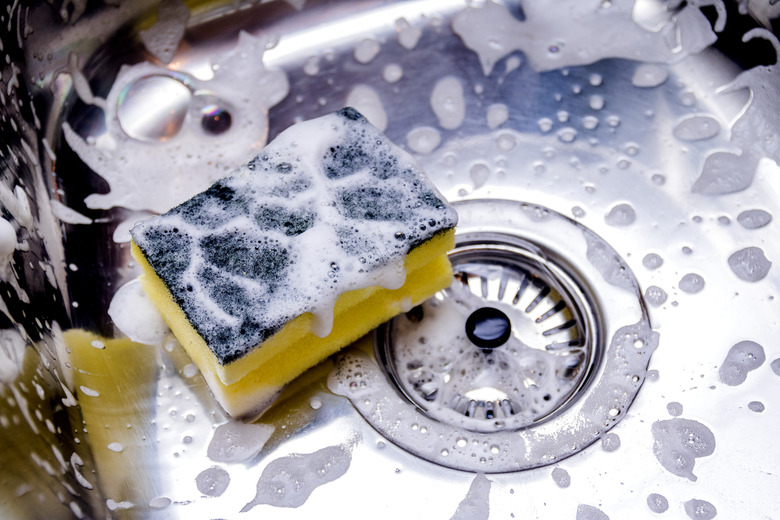How To Clear Blocked Pipes And Remove Solid Caustic Soda
We may receive a commission on purchases made from links.
Caustic soda, more commonly known as sodium hydroxide or lye, can clean a drain quickly, but it's very aggressive, which means you've got problems if you use it in the wrong way — like pouring the crystals directly into the drain. In this case, the crystals will settle in the trap or some other place in the pipes and won't dissolve. You're then left with a rock-hard mass that you have to clean out mechanically.
If you want to use caustic soda for a blocked drain, your best bet is to use Drano or some other drain cleaner that contains caustic soda in the proper proportions for drain cleaning. If you went ahead and purchased sodium hydroxide crystals and simply poured them into the drain, and they hardened into a mass, you're probably going to have to disassemble the pipes. Wear gloves, goggles, protective clothing and a respirator when doing this, or you could be severely injured.
Try a Plunger or Drain Bladder First
Try a Plunger or Drain Bladder First
A humble household sink plunger may be all you need to get out of your predicament and may help you avoid breaking into the pipes. Since the hardened mass is blocking water flow, the sink, shower pan or bathtub is probably full of water, which is a good thing. Water is incompressible, and plunging is more effective when you're not pumping air.
Put duct tape over sink overflow holes or other drains connected to the one you're trying to clear to help focus your efforts on the actual blockage. Hold the plunger at an angle over the drain opening to allow it to fill with water, then fit it around the drain and pump vigorously. If water begins to flow, even by a small amount, you're making progress, so keep pumping to help the clog dissolve and move along.
A drain bladder is even more effective than a plunger, and you can buy one at any hardware store, When you put it in a drain filled with water and fill it with water from the tap, it creates an almost irresistible force that should persuade the mass to move. Be sure to be wearing gloves, goggles and clothing that covers your forearms to protect yourself from splashes.
Take Apart the P-Trap
Take Apart the P-Trap
Failing to clear the drain with a plunger or bladder, your next step should be to disassemble the P-trap and physically clear the material out of the drain. If the blockage is in the trap itself, you'll want to empty the trap in a bucket as soon as you remove it and take the trap outside to chip out the hardened material. With caustic soda, plastic pipes can see extreme effects, so you may have to replace the trap.
Use a drain auger, or snake, to clear blockages in the waste line past the trap. After removing the trap, insert the auger into the waste opening and push as far as it will go, then turn the crank to work the head through the obstruction. If the obstruction is lodged too deeply in the waste line for the auger to reach, call a plumber, who has the tools and resources to do the job safely.
Caustic Soda and Vinegar
Caustic Soda and Vinegar
Caustic soda is alkaline and vinegar is acidic, so it makes sense at first glance to pour vinegar into the drain and let it react with the hardened material to produce a salt that is far less harmful and will dissolve in water.
But there are three problems with this approach. The reaction can be violent and may damage the pipes, could release harmful gases or may not work at all because only a small portion of the blockage is exposed to the vinegar.
It's dangerous to combine caustic soda with any other chemicals in your drain, even hot water, because of the amount of heat released. If you can't clear the drain physically, don't hesitate to get professional help.
